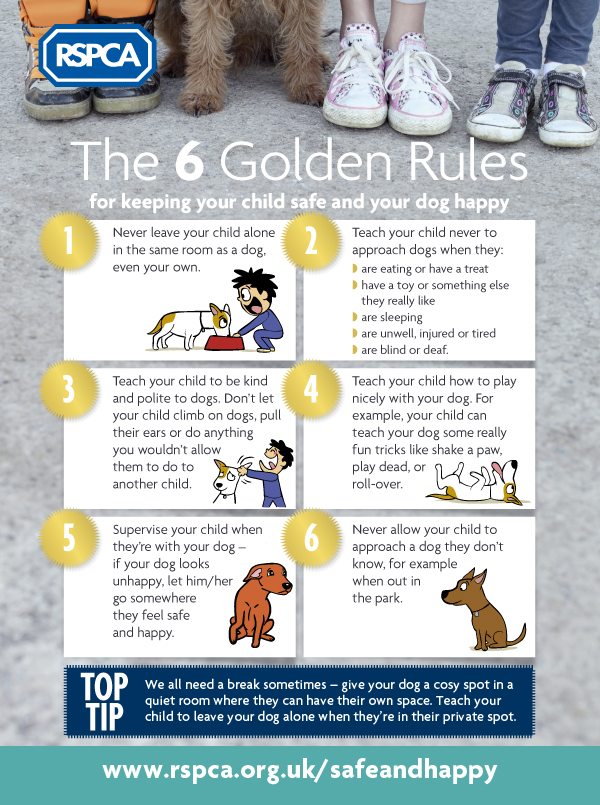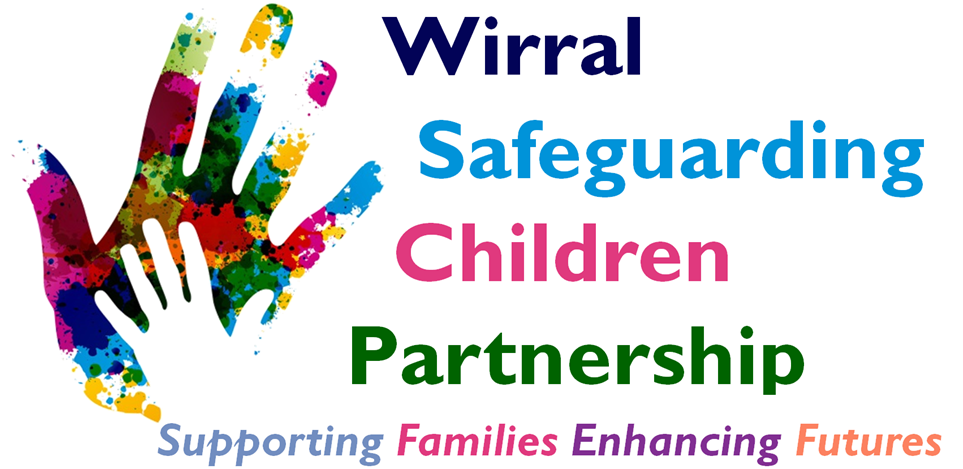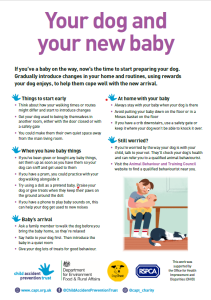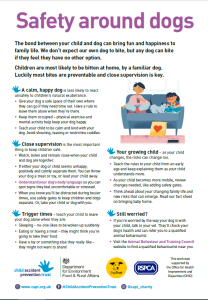Dogs and Children
New July 2023:
Over the past 18 months there has been an increase in the number of dog bite incidents across the North West which in a number of cases have sadly resulted in fatalities of Children and Adults. In response Merseyside Police has launched its Taking The Lead campaign which aims to reduce the number of dog bite incidents in Merseyside.
The campaign promotes responsible dog ownership and safe behaviour from people around dogs, by highlighting the practical steps we can all take to keep everyone (including dogs) safe and looked after.
The benefits of owning pets are well established. Having a pet can have physical and emotional benefits for a child as well as teaching them about responsibility and caring for living creatures. However, a number of children across Merseyside and the north-west of different ages have been seriously injured or have died from attacks by dogs in recent years.
The aim of this page is to assist professionals to assess risk and take action to protect children from serious injuries which can be inflicted by dogs, bur particularly those that are prohibited, dangerous or badly looked after by their owners.
Legislation Relating to Dangerous Dogs
The Dangerous Dogs Act (1991) provides detailed information about the legislation covering certain types of dogs, the responsibilities of the owners and the actions that can be taken to remove and/or control dogs:
- Certain dogs are ‘prohibited’ and if any agency has any knowledge or report of a dog of this type, the matter should be reported to the police immediately;
- Any dog can be ‘dangerous’ (as defined by the Act) if it has already been known to inflict or threaten injury;
- Injuries inflicted by certain types of dog are likely to be especially serious and damaging. Strong, powerful dogs such as Pit Bull Types will often use their back jaws (as opposed to ‘nipping’) and powerful neck muscle to shake their victims violently as they grasp;
- When reports of ‘prohibited’ dogs and known or potentially dangerous dogs are linked to the presence of children, all agencies should be alert to the possible risks and consequences;
Part 7. of the Anti-social Behaviour, Crime and Policing Act 2014 strengthens powers to tackle irresponsible dog ownership by extending to private places the offence of owning or being in charge of a dog that is dangerously out of control in a public place. It also provides that a dog attack on an assistance dog constitutes an aggravated offence.
Part 7. also ensures that the courts can take account of the character of the owner of the dog, as well as of the dog, when assessing whether a dog should be destroyed on the grounds that it is a risk to the public.
The Home Office Crime Classification 8/21 is amended to: “Owner or person in charge allowing a dog to be dangerously out of control in any place in England or Wales (whether or not in a public place) injuring any person or assistance dog.” Section 3 (1) Dangerous Dogs Act 1991 as amended by Section 106 Anti-Social Behaviour Crime and Policing Act 2014.
Safe Supervision of Children and Dogs
These three actions are the best way to ensure the right level of supervision to avoid preventable risks:
- Watch, listen, and remain close during child-dog interactions. It’s important to do all of these as each one alone is unlikely to be sufficient.
- Intervene when either the child or dog looks uncomfortable or acts in an unsafe way. Physically separate the child and dog in a calm and gentle way.
- Separate the child and dog if you are likely to be preoccupied or distracted. Put children and dogs in separate rooms, take the child and/or dog with you, or use a physical barrier such as a baby gate.
It’s important to understand your dog’s body language to look for signs that they feel uncomfortable or stressed.
Assessing Risks to Children and Young People
When a practitioner from any agency undertakes a home visit and there are children and dogs in the household, the practitioner should consider whether the presence of the dog/s may present any kind of risk to the welfare of the child/ren.
There will be times when even the most well cared for dog behaves in a way that had not been expected. The care, control and context of a dog’s environment will impact on the dog’s behaviour and the potential risks it may pose. Research indicates that neutered or spayed dogs are less likely to be territorial and aggressive towards other dogs and people. Dogs that are kept and/or bred for the purpose of fighting, defending or threatening others are likely to present more risks than genuine pets.
Here are some common child behaviours that often precede a bite. Whilst these behaviours are often meant as expressions of love, they can be difficult for a dog to cope with:
- Hugging
- Kissing
- Preventing a dog from moving away freely
- Stroking or approaching when the dog is eating or drinking
- Stroking or approaching when the dog is sleeping or resting
- Taking away an important resource i.e., a toy or item the dog is enjoying
All children are potentially vulnerable from an attack by a dog but very young children are likely to be at greatest risk. A young child will be unaware of the potential dangers they could face and will be less able to protect themselves. Small children are of a size that leaves especially vulnerable parts of their body exposed. The question should be asked: ‘is the dog left alone with the child?’ This applies even if the child is in a cot, bed or seat of some kind.
If it is the professional judgement of the practitioner that a dog presents a risk to a child, the police and Children’s Services should be contacted immediately.
Protection and Action to be Taken
Any agency that becomes aware of a dog that could be prohibited or considered dangerous, should collect as much information as possible:
- The dog’s name and breed;
- Information about the owner;
- The reason for keeping the dog and information about other family members, particularly young children.
Where there is a report of a child having been injured (always dial 999 in an emergency), consideration should be given to the nature of the injuries and a referral should be made to the Integrated Front Door.
The referral should be considered if the following criteria apply:
- The injured child is under two years of age;
- The child is under five years of age and the injuries have required medical treatment;
- The child is over five years and under 18 and has been bitten more than once by the same dog;
- The child/young person is under 18 years of age, the injuries have required medical treatment and initial information suggests the dog responsible could be prohibited and/or dangerous;
- A prohibited and/or dangerous dog is reported and/or treated, and is believed to be living with and/or frequently associated with children under five years.
Some referrals might be logged ‘for information only’ by the agencies, if it is clearly established that no significant or continued risk is likely to the child, or other children (for example, if the dog has already been ‘put down’ or removed).
Some referrals might prompt ‘information leaflets’ on Dogs and Safe Care of Children to be issued, if the incident or injury was clearly minor, if the child was older or if the family have clearly shown themselves to be responsible dog owners.
In more serious cases a strategy discussion and joint section 47 investigation should lead to further discussions with other agencies and home visits to complete assessments and to inform judgements on parenting and the care and control of the dog(s).
Advice might be sought from a veterinary professional to help determine the likely nature or level of risk presented by the dog(s). As with all other assessments ‘the welfare of the child is paramount.’
Significant Issues
The RSPCA advice to all professionals who are in contact with a household where there is a dog/s present:
“When looking at, or asking about a dog think about the following points, which should not be considered an exhaustive list but are intended to prompt a professional’s curiosity as to the state of the dog’s welfare along with suggested courses of action.”
“The points relate to Section 9 of the Animal Welfare Act, 2006 which imposes a duty of care on a person who is permanently or temporarily responsible for an animal. This duty of care requires that reasonable steps in all the circumstance are taken to ensure that the welfare needs of an animal are met to the extent required by good practice. The welfare needs are:
- The need for a suitable environment;
- The need for a suitable diet;
- The need to be able to exhibit normal behaviour patterns;
- The need it has to be housed with, or apart from, other animals;
- The need to be protected from pain, suffering, injury and disease.
During the visit ask if there is a dog in the property including the back garden. If there is, and the dog isn’t in the same room as you, ask to see him.”
RSPCA 6 Golden Rules for Keeping Your Child Safe and Your Dog Happy:

Emergencies, injuries or advice
If a child gets injured by a dog, immediately seek medical advice and treatment for them. In any emergency, call 999 and request an ambulance.
The Police can be contacted on 101 for advice about dangerous dogs including if you are aware of a particular dog from a prohibited breed.
Useful Contacts
Merseyside Police Taking the Lead campaign – https://www.merseyside.police.uk/police-forces/merseyside-police/areas/campaigns/campaigns/2023/july/taking-the-lead/
RSPCA – https://www.rspca.org.uk/adviceandwelfare/pets/dogs/company/children/safe
Blue Cross – Be Safe with Dogs Guidance for Families –
https://www.bluecross.org.uk/advice/dog/keeping-your-family-dog-and-visiting-children-safe
The Dogs Trust – Advice for Owners – https://www.dogstrust.org.uk/help-advice
The Dogs Trust also offer free workshops for schools. More details can be found here


